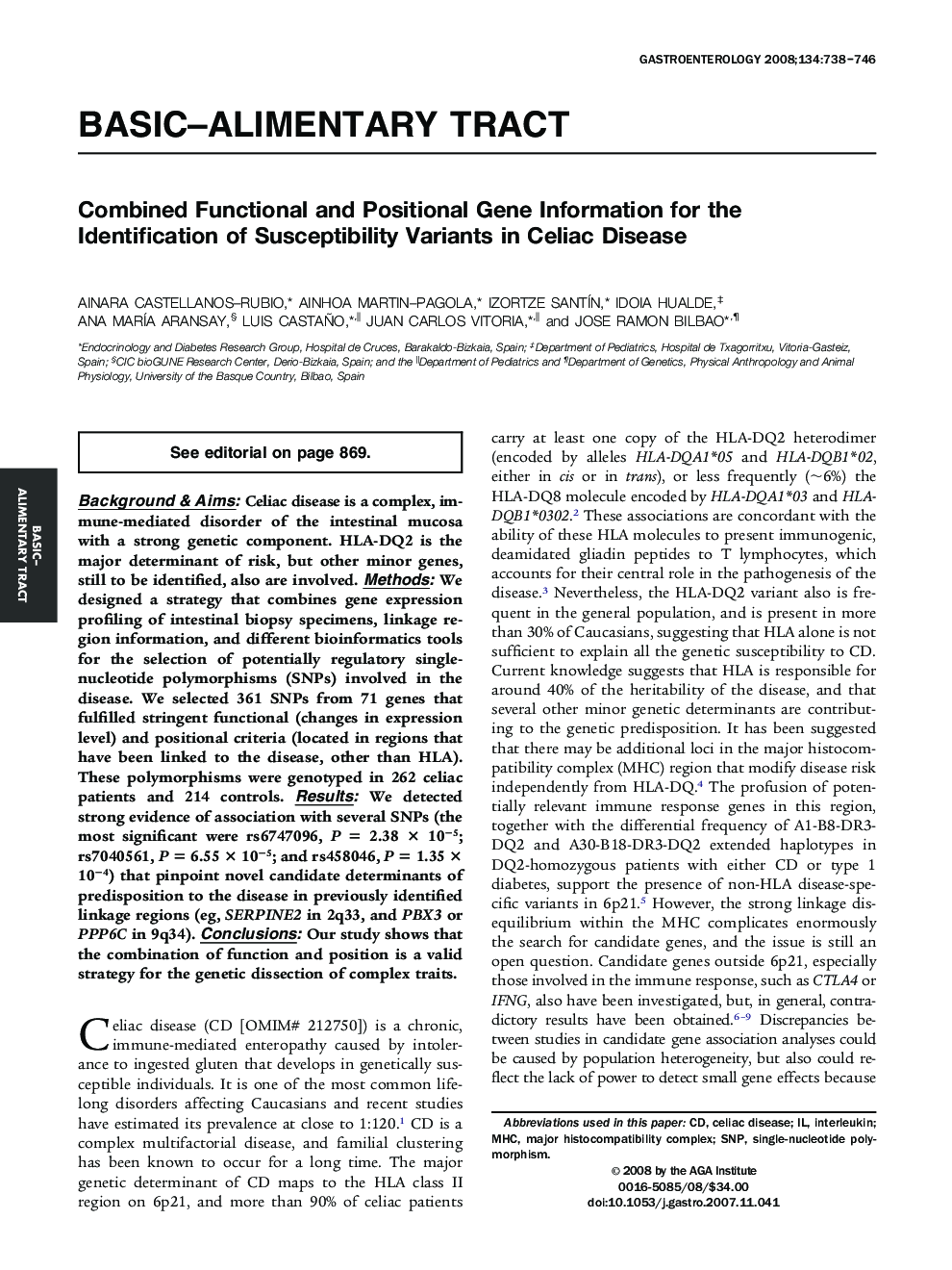| Article ID | Journal | Published Year | Pages | File Type |
|---|---|---|---|---|
| 3296378 | Gastroenterology | 2008 | 9 Pages |
Background & Aims: Celiac disease is a complex, immune-mediated disorder of the intestinal mucosa with a strong genetic component. HLA-DQ2 is the major determinant of risk, but other minor genes, still to be identified, also are involved. Methods: We designed a strategy that combines gene expression profiling of intestinal biopsy specimens, linkage region information, and different bioinformatics tools for the selection of potentially regulatory single-nucleotide polymorphisms (SNPs) involved in the disease. We selected 361 SNPs from 71 genes that fulfilled stringent functional (changes in expression level) and positional criteria (located in regions that have been linked to the disease, other than HLA). These polymorphisms were genotyped in 262 celiac patients and 214 controls. Results: We detected strong evidence of association with several SNPs (the most significant were rs6747096, P = 2.38 × 10−5; rs7040561, P = 6.55 × 10−5; and rs458046, P = 1.35 × 10−4) that pinpoint novel candidate determinants of predisposition to the disease in previously identified linkage regions (eg, SERPINE2 in 2q33, and PBX3 or PPP6C in 9q34). Conclusions: Our study shows that the combination of function and position is a valid strategy for the genetic dissection of complex traits.
